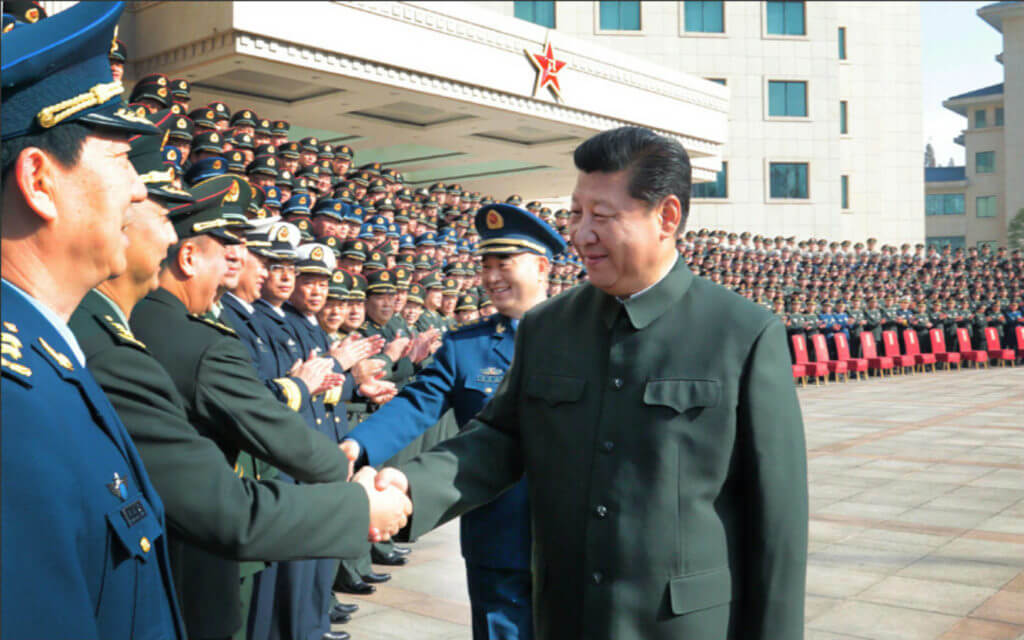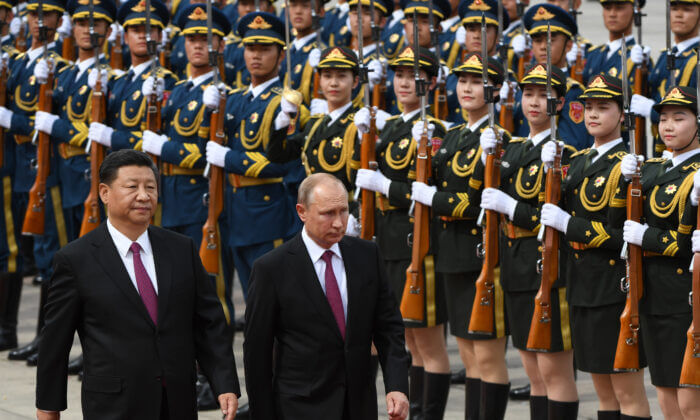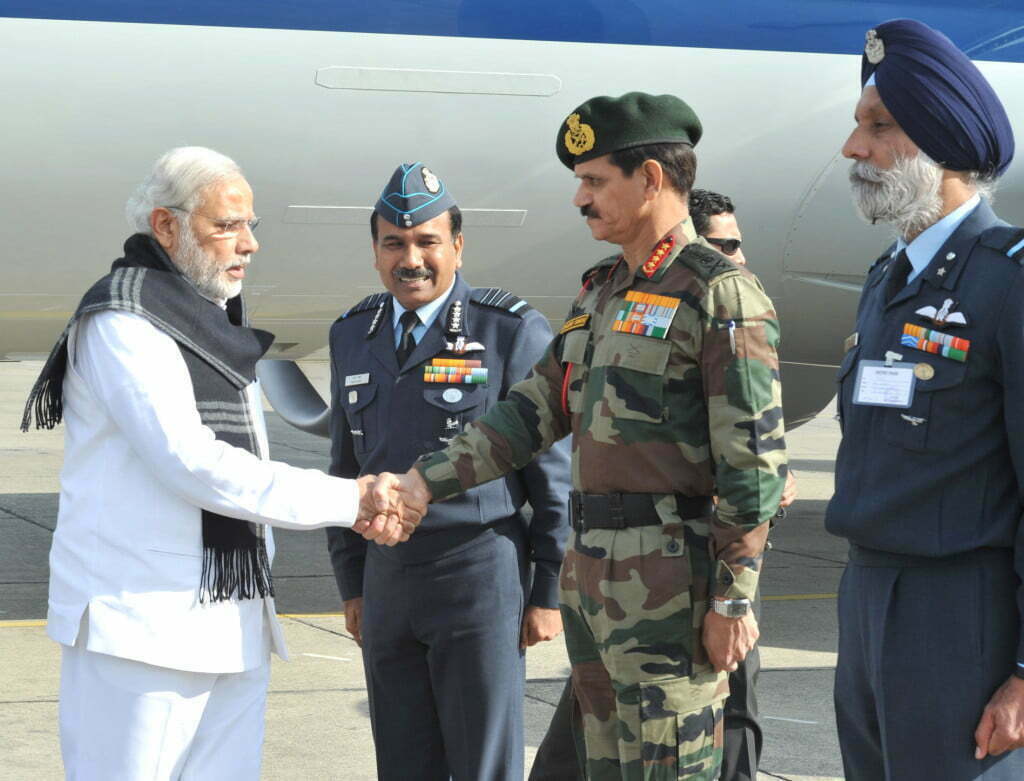“We’ve been growing young second lieutenants through the military academies for about three years, but it’s really difficult to grow majors, lieutenant colonels and brigadier generals. It simply can’t be done overnight
Lt. Gen. Martin Dempsey, Statement before the House Armed Services Subcommittee On Oversight and Investigations

Civil-Military Fusion (CMF) is essentially the fusion of military and civilian resources and capabilities for optimising a nation’s comprehensive national power both during war and peace. In a larger sense, CMF is beyond just dual use but the effective military fusion of civilian facilities, technology, and talent and leveraging the close relationships between its defence sector, bureaucrats, politicians, academia, and the private sector. The most important factor in CMF is breaking cultural barriers and establishing linkages with mutual trust to achieve fusion beyond just integration. It thus needs a top-down approach with Politico-Military- Bureaucratic fusion as the doctrinal construct.

Clausewitz stated that “war is politics by other means”. Civil-Military relations describe the relationship between military organizations and civil society, military organizations and other government bureaucracies, and leaders and the military.
The field is inherently both normative and empirical. Thus, in a democracy, the political leadership based on the recommendation from the military and advice of the bureaucracy execute options for national defence. The outcome strategy is a manifestation of harmonious civil-military relations (CMR) to achieve the desired end state. Thus, while the military needs to understand the instruments of statecraft; the polity, bureaucrats, technocrats, industry and academicians need to understand warcraft too.
CMF has become increasingly relevant in contemporary conflict situations wherein battle zones have permeated the physical battlespace into the societal information space, cognitive domain and technology revolution causing disruptions in military affairs. Thus, deterrence has acquired an integrated construct of the whole-of-nation approach and conflict a whole-of-society approach, wherein neither military nor civil society can exist in silos. Recent Russia -Ukraine Conflict has many lessons not only relating to geopolitics and military but also to CMF as a future force multiplier.

Amos Perlmutter in his balanced theory of civil-military relations rejects the view that a clear-cut division of functions exists between civilian and military. The assumption “that professionalism removes military from politics” is grounded on classical traditions of administrative theory, which is built on the premise that policymaking is distinguished from policy implementation. The modern administrative theory is fusionist, recognising that bureaucracy, military and politics are symbiotically connected. While the politicisation of the military is not desirable yet understanding politics and the political system is necessary at the strategic level. The military’s role in the evolution and implementation of the policy on national security mandates it to be intrinsic in the policy formulation process.
Samuel Sarkesian in his theory on CMF states three areas of civil-military relations as systemic interaction between civilian, military, and political-social systems
This relationship separates the realisation of CMR into three areas and two layers. The three areas are “political-military”, “political-society”, and “military-society”. The two layers are “institutional” and “cultural”. The institutional layer is a manifestation of laws, procedures and organisations and the second is the cultural layer which influences areas of perception, attitude, trust and behaviour. It accounts for the value system of the actors in civil-military relations, their level of education, exposure and interaction. Thus, the greater the investment in educating the military, bureaucracy, polity and society, the greater the harmony in matters of national security. The greatest challenge will always remain the cultural layer bedded in the historic baggage and thus education becomes the primary means to transform for the future.
It must never be forgotten that in the three primary facets of nation-building – Defence (military), Diplomacy(bureaucrats) and Development (Politicians); unless the defence is empowered the other two will lack the stability to perform. Thus, both understandings of matters of defence and adequacy of resource allocation remain critical factors for national security.
The Indian Civil-Military Relations Model

In India, the civil-military divide is complex with historical underpinnings and reveals two distinct issues. The first is a conscious and deliberate decision by the political leadership to insulate the military from political influence and interference shrouded in a cloud of distrust shaped by apprehensions of Pakistan’s military coup model. The second is a systematic and gradual degradation of the status of the military vis-à-vis the bureaucracy. While the former aspect may be viewed positively to keeping the military apolitical, it denied the military playing a crucial role in policy making. The other aspect, of side-lining, emanates from political apathy and bureaucratic arrogance of calling the shots. The greatest void in the Indian political system is the lack of experience and continuity of thought on matters military both by the bureaucracy and the politicians. Some of the more recent policy decisions taken by the MoD devoid of military logic and advice are indicative of a lack of civil-military fusion, more oriented to populistic vote bank politics and insensitivity to a national security vision. The void of a ‘National Security Strategy’ remains glaring.

Prof Steven I Wilkinson, a political scientist at Yale University, in his book ‘Army and the Nation: The Military and Indian Democracy since Independence’, decodes why India, unlike other countries that inherited colonial ‘divide and rule’ armies, has been able to consolidate its democracy and make its army safe for democracy. He elucidates the central premise of political leadership: to make the military ‘coup proof’ by various constitutional, institutional and administrative statutes. Thus, the military was kept out of the policymaking loop by intent and willingly took a backseat allowing both the semi-literate polity and an egoistic bureaucracy to hold the stirrups. The mindsets of invisible trust barriers and lack of maturity, understanding and sagacity have resulted in a heavy price.

The discourse on professional military education in India evolved into a siloed approach to understanding warfare with a skewed imbalance in training and education focus.
Anit Mukherjee in his study “Educating the Professional Military”, makes a sound case for civil-military fusion in PME (Professional Military Education) and points out the weaknesses which, to him, are ‘primarily due to its model of civil-military relations, with a limited integration with civilians.’ He enumerates that civilians have had a limited role as professional educators in shaping the content of military education, leaving PME almost entirely to the services. The military has focused more on training rather than balancing training, education and experience. This has created an intellectual and strategic void in thought leadership needed by senior military leaders at the strategic level of warfare.
The need for this multidisciplinary knowledge is not meant just for the military but is a two-way process of educating the non-uniformed fraternity who deal with matters military. The politicians and bureaucrats are intelligent, well qualified and experienced but hardly educated on nuances of national defence. The civil bureaucracy, the political class and the academics also need to be trained and educated appropriately on matters military. James S. Corum, the Dean of the Baltic Defence College, and an experienced military educator argue: “Indeed, no modern armed forces can operate without the support of a cadre of professional civilians who work in the fields such as logistics, education, military, administrative support, law enforcement, and research and development.” Christopher Clary another noted scholar on the subject asserts the importance of a well-informed and educated political leadership and bureaucracy in matters of defence strategy: “Militaries are complicated, expensive organizations, and there is a tendency for civilians to shirk the specialised demands of defence oversight”.

The reality remains that it is both impractical and undesirable to make politicians military philosophers, yet advice both by the military and bureaucracy must be knowledge-based and deep-rooted which is the academic pursuit in a harmonious CMR.
Calibrating the CMF in Shaping Future leaders
The core to shaping future military leadership is the liberal cultural review of the educational system, its trainers, and its curriculum and accepting a paradigm shift from civil-military integration to civil-military fusion. The review must be balanced based both on the nation-specific operational environment and academic freedom. Traditionally most militaries are apprehensive of integrating the non-uniformed human resource out of a sense of organisation turbulence or dilution of control due to civil interference. Yet without this turbulence, the transformation to meet future challenges of military effectiveness will not manifest. Thus, both the quality of change and the management of change are important. The comfort zone of the sprinkling of civil guest lectures must lead to a more liberal and integrated approach of having civil faculty of policymakers, technologists and academicians who work in unison with the military to impart holistic PME.

It is equally important to study the models in other countries and pick up the best practices suited to Indian environmental needs. Civilian integration and contribution on matters of PME have been most distinct and transformational in the case of the U.S. Goldwater-Nichols Act in 1986 and the follow-up Skelton Committee in 1989. These civilian-led initiatives however faced considerable misgivings of loss of autonomy from the military. One of the architects of Goldwater-Nichols reforms, Arch Barret, admitted that they viewed “changes in education as the means to change the culture of the organization of the U.S. armed forces”. The Goldwater-Nichols Act strengthened the office of the Joint Chiefs who in turn, re-shaped PME by ensuring that all military education institutions adhere to it. The committee recommended amending the present regulation to enable and encourage hiring civilian faculty at all the war colleges leading to an increase in the quality and quantity of military educators contributing to a better PME model. The process also led to the accreditation of the military with civilian institutions of higher education and matching the demands to maintain higher educational standards. This paved the path to CMF in the field of PME leading to a better informed and educated leadership. A lesson India could well imbibe.

In the U.K., CMF in PME led to ‘modern forces’ to meet future challenges—a euphemism for enhancing military effectiveness (U.K. Ministry of Defence, 1998, p. 10). This emphasis was stressed by the Defence Training Review, conducted by an integrated team of military officers and civilians in 1999. Its report aimed at reforming military education based on the felt need that the military needs to “shift to joint, multinational and inter-Agency operations” (U.K. Defence Training Review. 2001, p.6). As an outcome, the Defence Academy was raised in April 2002.
Also Read: Pakistan military alone can help resolve the economic crisis
In China, the strategy called ‘Military-Civil Fusion’ (MCF) which was focused on spurring innovation in key sectors and leveraging dual-use technologies for military end-uses has given space to several debates. However, the scope of MCF was much larger than just education is primarily focused on ideological, political and technological facets. China, which has long practised what is called Civil-Military Integration (CMI) sees MCF as a master strategy that needs to be amalgamated with other national strategies for economic development and transformation, to achieve an organic, powerful, and comprehensive national system of strategies.
CMF in Indian Military Education

The PME construct in India has been driven by the military with the little civil interface. This resulted in a fractured PME which lacked a holistic horizon in keeping pace with changing character of war. The role of the MoD was mainly confined to granting policies, budgets, training teams, foreign visits etc. Their contribution to the qualitative enhancement or transformation has been minuscule as the bureaucracy lacked expertise and understanding of matters military which was best considered a military domain. This comfort zone in silos has led to stagnation in PME and the shaping of future military leaders.
A very high-quality knowledge pool exists in the civil domain in our country. Its leverage needs no elaboration. ‘‘Outsourcing’’ of training to industry and civil institutions, would enable a joint approach is critical to strategic success. The Indian PME policy has incorporated this aspect albeit in a limited fashion which merits consolidation in future. Increased interaction and subscription to seminars, capsules and courses run by civil establishments and agencies with due accreditations must be pursued to derive best practices and insight into competencies existing in the non-military domain. As a matter of policy, accreditation to academic institutions/universities must be encouraged with the dual objectives of benchmarking standards of instructions/evaluation at par with the standards prevalent in the academic world, as also to give recognition to the qualification gained by the individual.

Another important deficiency is the understanding of the military beyond the proverbial Iron curtain. The military leadership in India has little institutional understanding of both the environment and the functioning of politicians, bureaucrats, technocrats, CAPF and other organisations contributing to national security calculus. This has often resulted in cynicism becoming a style statement driven more by mistrust and apprehensions as a result of the education and knowledge void. The primary reason is the cocooned approach to silos in the PME system and not understanding that prevailing in future wars is not only a whole-of-government approach but also a whole-of-society approach. The solution lies in a more meaningful interface at all levels to understand the national security apparatus without politicisation of the military. This aspect becomes even more critical at the Flag rank level when the interaction beyond the military enhances and the demand for synergy expands. Military leaders at the strategic level must be empowered to be heard and have a say in policies relating to national defence in particular and national security at large. At the PME level, the civil faculty could meaningfully contribute towards a mature and well-informed military. It will also help the other organs of national security to understand the military better. The vice versa is also true for IAS, IFS and CAPF educational institutes.
Recommendations – Policy Framework for Shaping Future Military Leaders and the Role of CMF in Military Education
The transformation towards shaping future military leaders must lead to a more liberal CMF approach to imparting holistic PME by the military. Similarly, all those associated with national defence need to be educated and well-informed in their understanding of matters military. This forms the basis of the following policy recommendations.

- The start point is to reflect, reorient and strengthen the roots of the CMF in the present PME. This is relevant both for the military studies departments in civil universities and military institutions, particularly DSSC and War Colleges. This will require holistic funding, cross-pollination and a review of curricula. The synergy with CAPF, BSF, IAS/IRS/IFS and IPS only takes place at NDC which is too little too late. It must start from the JC level upwards. It would involve institutional fixing the cause and roots not symptoms as a hot patch. Certain aspects of national security and non-military subjects can be outsourced to universities or even think tanks to run capsules as a progressive road finally leading to the establishment of a civil faculty. The transformation has to be gradual for both management and acceptance of the change. Even civil university departments must subscribe to military officers on deputation or veterans for employment in their Defence Studies Department. This requires the synergy of culture, thought and effort by military war colleges, academic departments in universities, and the military and civil bureaucracy. The PME construct has to be multi-disciplinary, filled up with balanced academics which must bring in academic rigour and research without turning warriors into professors.
- Secondly, the glaring void in military education and strategic thought connections remains the nonexistence of a stated national security strategy. For a country that has fought five wars and is hemmed in by nuclear-armed states, India surprisingly does not have a published document that spells out its national interests, identifies its threats — political, economic, diplomatic or concerning security — and thus logically evolves policies to deal with them. The void of such a strategic enunciated construct conceptually makes India’s defence policy look ad hoc and hinders both the character of CMF and PME.
- Thirdly, the Indian Defence University must overcome the existent political barriers for the largesse of the national cause. Once established it will provide an appropriate platform to have a healthy mixture of CMF by veterans having military knowledge and experience, and civilian academicians for a wider understanding of national security and mentoring research.
- Fourthly, at mid-service levels, higher specialisations on matters that contribute to the wider canvas of national security must be encouraged as post-graduation and PhD pursuits. This can lead to better officer management and be a win-win situation for all.
- Fifthly, an important deficiency is the understanding of the military beyond the proverbial Iron curtain. At the PME level, the internal civil faculty including retired bureaucrats, ambassadors, CAPF and other instruments of national security will go a long way toward a mature, balanced, professional and well-informed military. The percentage induction can be graduated as a test bed and subsequently firmed in for an optimal balance. It will also help the other organs of national security to understand the military better. The vice versa is also true for IAS, IFS and CAPF educational institutes.
- Lastly, education on matters military has to be also organised for the bureaucracy, civilians in MoD and Defence Industry who deal with national security, strategy and defence capability development. The MoD and other Ministries dealing with National Security have no educational background or institutionalised mechanism for national security. The need is for a National Security Professional Orientation Program which could be run by either a reputed University or Defence Think Tank or a Defence Training Institution like War College. This requires an institutional policy framework beyond just visits to border areas and photo ops.
This article appeared in SYNERGY, Journal of the Centre for Joint Warfare Studies (CENJOWS). The views expressed are that of the author

